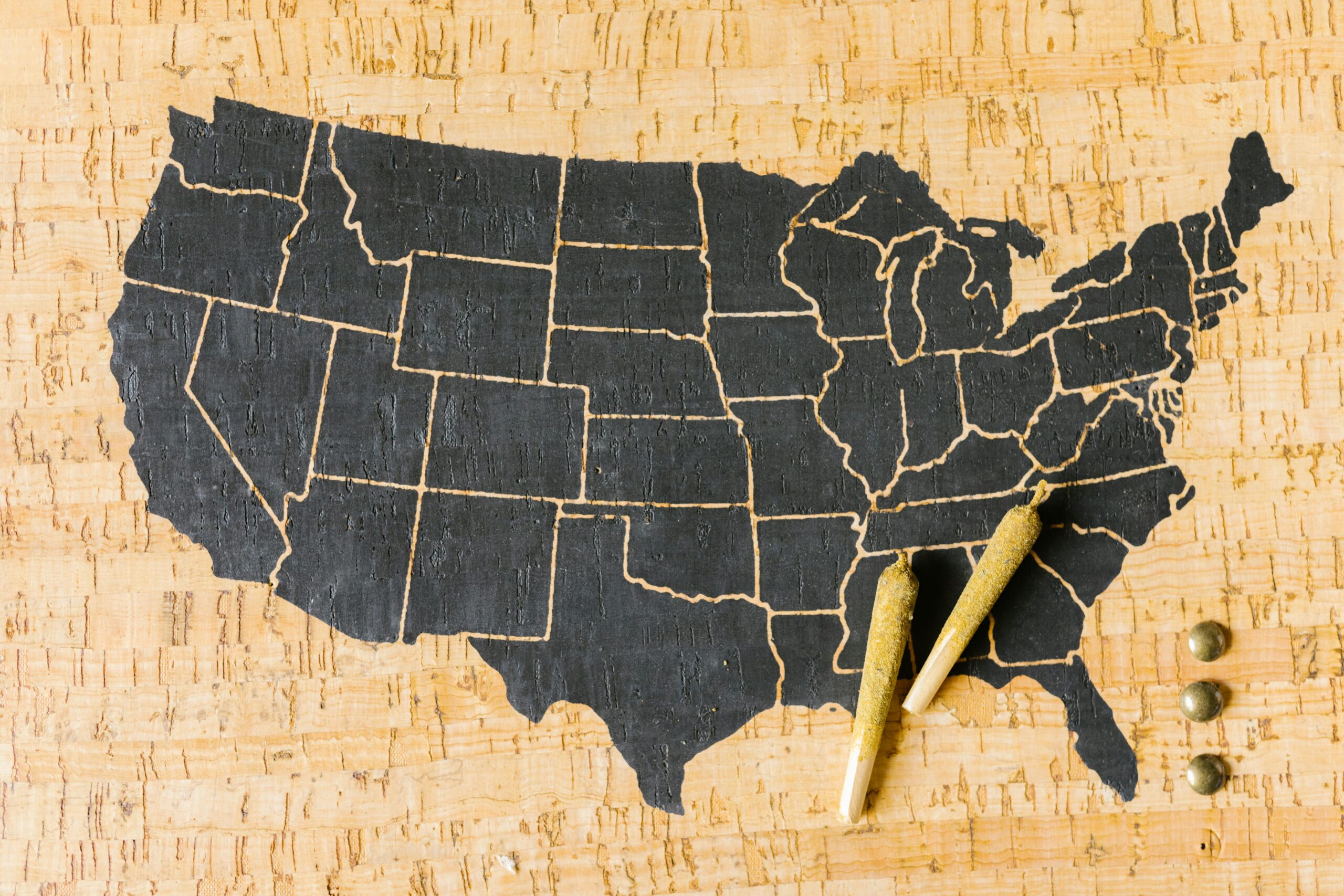Marijuana, Violence and the Rescheduling Controversy
This information is provided for educational purposes only. Reader retains full responsibility for the use of the information contained herein.
Mr. President, please don’t do it!
Don’t do what? Don’t reclassify marijuana under the Controlled Substances Act.
Moving marijuana from Schedule I to Schedule III under the Controlled Substances Act is like giving fentanyl-laced candy to children. Deceptively dangerous. Yet, that’s what President Biden said he was going to do and what President Trump has signaled he is now considering. However, the consequences for society, workplaces and families will be catastrophic. At a time when reducing crime and violence are such a high priority for the administration, such a move doesn’t make sense. There are not enough National Guard troops to send to all the cities that will experience a dramatic increase in violence and crime after rescheduling essentially legalizes marijuana.
As I write this, marijuana is classified as a Schedule I controlled substance. Schedule I drugs, according to the Drug Enforcement Administration (DEA), have “a high potential for abuse, no currently accepted medical use in treatment in the United States, and a lack of accepted safety for use under medical supervision.”(i) That describes marijuana perfectly.
But we also know that there is a definite link between marijuana use and violence.
Dr. Ben Carson, a former pediatric neurosurgeon and Secretary of Housing & Urban Development during President Trump’s first term, is advocating against rescheduling marijuana: “I urge caution when we consider such sweeping changes. The intent may be compassionate, but the consequences are certainly harmful. As someone who’s spent decades caring for the health and well-being of families across America, I have seen firsthand how substance abuse devastates lives and communities.”(ii)
Dr. Carson added: “The research is clear: more marijuana means more crime. A University of Colorado study found crime rates up to 1,452% higher in neighborhoods with at least one marijuana dispensary. In Denver, areas near dispensaries had 85 more property crimes per year than those without. Unfortunately, crime spikes aren’t unique to states like Colorado that have a lax drug policy. A comprehensive review conducted in 2024 of states with legal weed found that, post-legalization, substance-use disorders, chronic homelessness and arrests increased by 17%, 35% and 13%, respectively. The same report found legalization increases arrests for violent crime by 18% and property crime by 15%.”
Another highly respected medical expert, Dr. Marc Siegel, considers marijuana deceptively dangerous: “Weed is the most dangerous drug in America,” Siegel wrote in an article published by Spectator.(iii) “The main reason for this is the fact that most people don’t think it is. In fact, they typically think just the opposite. They believe not only that pot is safe, but also that it has true medicinal qualities. Little do they know that those benefits are barely worth the paper you wrap your joint in.”
Still not sure? Consider the following:
First: “The shooter who killed two children and injured 21 others at Annunciation Catholic Church in Minneapolis blamed ‘gender and weed’ for his mental health issues…”(iv)
The shooter, Robin Westman, who killed two children and injured 21 others, wrote in a manifesto: “Gender and weed [expletive] up my head. I wish I never tried experimenting with either. Don’t let your kids smoke weed or change gender until they are like 17.”(v)
Second: In a paper published by JAMA Network Open, postdoctoral scholar Ellicott Matthay, PhD, shared the results of a study that examined whether state marijuana legalization has led to changes in rates of violent injuries. “The researchers found that recreational marijuana legalization was associated with about a 20% increase in self-harm injuries among males under the age of 40.”(vi)
Matthay inexplicably stated the study’s results represented good news because the “research findings are largely a story of no problem, but suggest a potential concern for one population subgroup.”vii Never mind the fact that men under 40 is an extremely large “subgroup” representing nearly 89 million people in the United States in 2025.(viii)
Third: According to a report published by the National Library of Medicine (sources included): “There is evidence of a relationship between illicit drug use and intimate partner violence (El-Bassel, Gilbert, Wu, Chang, & Fontdevila, 2007; Moore et al., 2008; Roberts, Klein, & Fisher, 2003; Temple & Freeman, 2011). In a meta-analysis of 96 studies, Moore et al. (2008) found that use of marijuana was significantly associated (d = .22) with partner violence among all ages. Other studies have demonstrated support for the positive relationship between marijuana use and intimate partner violence among high school students (Chase, Treboux, & O’Leary, 2002; Malik, Sorenson, & Aneshensel, 1997; Sorenson & Berk, 2001), college students (Nabors, 2010), and clinical populations (Chermack, Walton, Fuller, & Blow, 2001; Murphy, O’Farrell, Fals-Stewart, & Feehan, 2001).”(ix)
Fourth: Referring again to a report published by the National Library of Medicine in 2022: “Mass shooters at Rep. Gabby Giffords’s constituent meeting in Tucson, Ariz. (2011), a movie theater in Aurora, Colo. (2012), the Pulse nightclub in Orlando, Fla. (2016), the First Baptist church in Sutherland Springs, Texas (2017), and Marjory Stoneman Douglas High School in Parkland, Fla. (2018), were reported to be marijuana users. It could be a coincidence, but increasing evidence suggests a connection.”(x)
Moving marijuana to Schedule III will most assuredly lead to more crime and violence and thus make America less safe.
We know this because marijuana legalization has led to increases in other negative consequences when the drug becomes more accessible. For instance, consider the increase in workplace accidents related to marijuana use. According to Quest Diagnostics:
“The percentage of employees in the general U.S. workforce testing positive for marijuana following an on-the-job accident increased to its highest level in 25 years in 2022.”(xi)
Now imagine what a marijuana positive result on a post-accident test can do to increase the costs of a company’s workers’ compensation and liability policies, in addition to the liability a company will likely face for injuries and property damage caused by marijuana-impaired employees.
Quest further explained the correlation between marijuana and post-accident test results this way: “These increases in post-accident marijuana positivity correspond with legalization of marijuana in certain states. In 2012, Colorado and Washington became the first states to legalize marijuana for recreational use. Since then, [a total of 24 states](xii) and the District of Columbia have legalized the recreational use of marijuana and [39 states] plus the District of Columbia(xiii) have legalized medical use, although either kind of use remains illegal under federal law.”
Marijuana legalization will just make it that much easier to get marijuana, to use marijuana, to be at work under the influence of marijuana, and to drive a school bus, fly an airplane or operate a forklift while impaired by marijuana. As well, we can expect incidents of violent crimes to increase. Nothing good will come of rescheduling marijuana from Schedule I to Schedule III.
Dr. Siegle cautioned: “There ought to be no rush to make marijuana products easier to come, and there is no reason to change its status as a Schedule I drug, despite pressure to do so.”(xiv)
Marijuana is highly subject to abuse and there is widespread disagreement about whether it serves a legitimate medical purpose. In fact, according to the federal government, “the FDA and DEA have concluded that marijuana has no federally approved medical use for treatment in the U.S.”(xv)
With all due respect Mr. President, please don’t do it. And if by the time this article is published, you’ve already done it… for the safety and wellbeing of America, please undo it.
Citations:
(i) Drug Fact Sheet: Marijuana/Cannabis. DEA. https://www.dea.gov/sites/default/files/2020-06/Marijuana-Cannabis-2020_0.pdf
(ii) BEN CARSON: As a doctor, I know fewer restrictions on marijuana will make cities worse. Fox 22. Sept. 2025. https://www.foxbangor.com/news/national/ben-carson-as-a-doctor-i-know-fewer-restrictions-on-marijuana-will-make-cities-worse/article_7f9c46d0-d735-543a-9040-0a46e9e061cf.html
(iii) Why weed is the most dangerous drug in America. Spectator/Australia. Oct. 2025. https://www.spectator.com.au/2025/10/why-weed-is-the-most-dangerous-drug-in-america/
(iv) Minneapolis Catholic Church shooter blamed ‘gender and weed’ for mental health issues. Catholic News Agency. Sept. 2025. https://www.catholicnewsagency.com/news/266341/minneapolis-catholic-church-shooter-blamed-gender-and-weed-for-mental-health-issues
(v) Ibid.
(vi) How do marijuana legalization policies affect violence rates? UCSF. Department of Epidemiology & Biostatistics. March 2021. https://epibiostat.ucsf.edu/news/how-do-marijuana-legalization-policies-affect-violence-rates
(vii) Ibid.
(viii) Visualizing the U.S. Population by Age Group. Visual Capitalist. Sept. 2025. https://www.visualcapitalist.com/u-s-population-by-age-group/
(ix) The Relationship Between Marijuana Use and Intimate Partner Violence in a Nationally Representative, Longitudinal Sample. National Library of Medicine. https://pmc.ncbi.nlm.nih.gov/articles/PMC3782298/#:~:text=Discussion.%20Among%20young%20adults%2C%20all%20analyzed%20patterns,of%20intimate%20partner%20violence%20perpetration%20and%20victimization.
(x) Cannabis and the Violent Crime Surge. National Library of Medicine. July-August 2022. https://pmc.ncbi.nlm.nih.gov/articles/PMC9462911/
(xi) Post-Accident Workforce Drug Positivity for Marijuana Reached 25-Year High in 2022, Quest Diagnostics Drug Testing Index Analysis Finds. Quest Diagnostics. May 2023. https://newsroom.questdiagnostics.com/2023-05-18-Post-Accident-Workforce-Drug-Positivity-for-Marijuana-Reached-25-Year-High-in-2022,-Quest-Diagnostics-Drug-Testing-Index-Analysis-Finds
(xii) These stats have been updated to reflect the legal status of marijuana as of May 1, 2025.
(xiii) Ibid.
(xiv) Why weed is the most dangerous drug in America. Spectator/Australia. Oct. 2025. https://www.spectator.com.au/2025/10/why-weed-is-the-most-dangerous-drug-in-america/
(xv) Drug Fact Sheet: Marijuana/Cannabis. DEA. https://www.dea.gov/sites/default/files/2020-06/Marijuana-Cannabis-2020_0.pdf
Copyright © 2010-2025 The Current Consulting Group, LLC – No portion of this article may be reproduced, retransmitted, posted on a website, or used in any manner without the written consent of the Current Consulting Group, LLC. When permission is granted to reproduce this article in any way, full attribution to the author and copyright holder is required.



